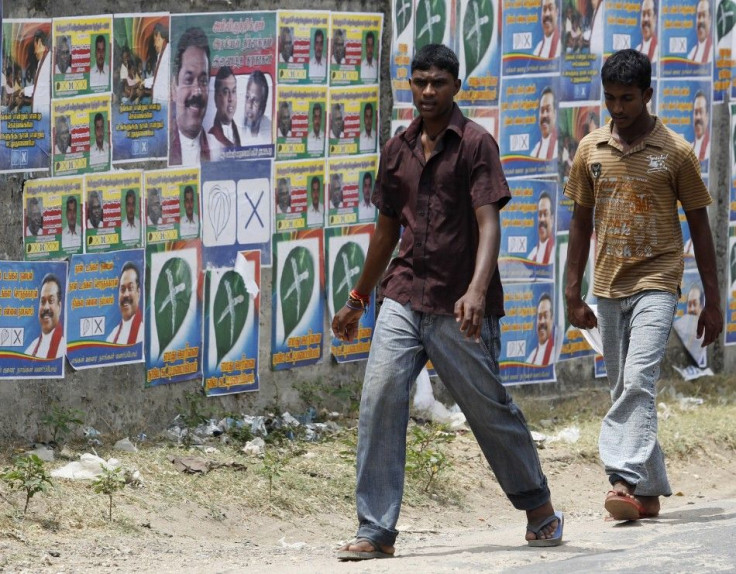Three Years After Civil War Tamils In Sri Lanka Remain Isolated And Stigmatized

Three years after a civil war between the Sri Lankan government and Tamil separatists, tens of thousands of Tamils in the country lack national identity cards (NIC), making it difficult for them to access public services and subjects them to police and army harassment.
In Sri Lanka, all citizens aged 16 or above are required to carry an NIC -- however, in 2009 during the final days of the deadly conflict between the Sri Lankan armed forces and the rebel Liberation Tigers of Tamil Eelam (LTTE), many Tamils were displaced from their homes by the fighting and lost everything, including their identity papers.
BBC reported that more than 100,000 Tamils, who tend to concentrate in the northern region of the island nation, have either lost or damaged their identity cards. Moreover, in areas that were controlled by the LTTE during the civil war, such identity cards became meaningless as the Tamil rebels were seeking to form an independent nation anyway.
Now, in post-war Sri Lanka, in the absence of a card, a person cannot open a bank account, withdraw money from an account, or travel freely to other cities, among sundry other routine items.
Tamils who lack their identity cards can also fall under the suspicion by the army and police or being LTTE supporters.
Sritharan Sabanayagam, a local resident, told BBC: During the [civil] war, it [national identity card] was very useful for minorities travelling from the conflict area to southern districts. But it also makes it easy for extremists to identify Tamils and minorities as their details appear in both [majority] Sinhala and Tamil languages. This is not the case with the majority community, whose details only appear in Sinhala. It is the bad side of the card.
Applying for a new NIC poses other challenges, including the fact that many Tamils do not have birth or marriage certificates.
Tamils in the north still live under military control (who operate a series of bases and checkpoints) and they have not shared in the economic rebound Sri Lanka has enjoyed since the end of the civil war.
Responding to criticism from the west, especially U.S. Secretary of State Hillary Clinton, that the military presence in the Tamil north should be reduced, the Sri Lankan external affairs ministry secretary Karunatilaka Amunugama, countered: Sri Lanka does not go to other countries and call on those countries to remove their troops from one place to another. It is simply not done because it is an internal matter.
Sri Lankan, officials, including President Mahinda Rajapaksa, say the military presence is needed because the LTTE still remains a threat to national sovereignty.
A 22-year-old student named Anpu in the northern city of Jaffna complained to the British newspaper The Guardian: The military [are] supposed to have no administrative duties here. But they interfere every day; we even need their permission to bury our dead.
The Tamil population in the Jaffna peninsula has also dropped dramatically over the past 30 years, according to a preliminary census report – from about 734,000 in 1981 to 583,000, a 20 percent plunge.
A Tamil lawmaker told Agence France Presse the population decrease is likely due to the mass exit of civilians fleeing the fighting in the area.
Our estimate is that out of the one million Tamils who fled the fighting and are living abroad, at least 80 percent were from Jaffna, said Suresh Premachandran.
If not for the war, the population in Jaffna would have been over 1.4 million.”
The reduced size of the Tamil population will likely have political consequences, including a decline in Tamil representation in parliament, which is dominated by the majority Sinhalese.
© Copyright IBTimes 2024. All rights reserved.











